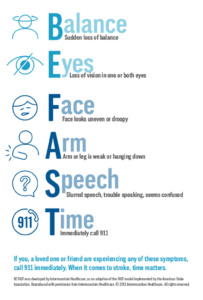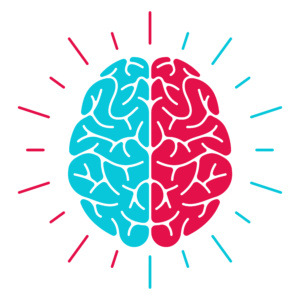Can You Recognize Signs of Stroke?
Article Courtesy of StatePoint Media
Many people are avoiding in-person doctor’s visits to limit potential exposure to coronavirus — or are simply ignoring health concerns altogether. However, when it comes to medical emergencies such as stroke, immediate medical attention is critical.
The fifth leading cause of death in the U.S., stroke occurs every 40 seconds and it can happen to anyone, of any age, at any time. When 59-year-old Paul “David” Dyches had a stroke on the job this past August, he quickly realized something was very wrong.
“I never experienced a feeling like this before, and I knew we had to do something right away,” says Dyches, who was experiencing classic stroke symptoms of weakness in his arms and legs. Upon his arrival at the hospital, he was evaluated via tele-neurology by experts over 150 miles away. After doctors confirmed he was experiencing a stroke, they delivered treatment immediately and he was able to be discharged the following day.
While in some cases quick action can help with recovery, statistics suggest that many Americans may be avoiding hospitals when they need them most due to anxieties surrounding the pandemic. A recent study published in “JAMA Internal Medicine” showed that emergency room visits to five major healthcare systems decreased by more than 40 percent as COVID-19 cases spiked.
As patients such as Dyches are learning firsthand, hospitals have a range of protocols in place to help keep patients and staff safe from coronavirus infection.
 “The hospital staff set me at ease right away,” says Dyches.
“The hospital staff set me at ease right away,” says Dyches.
Beyond pandemic fears, one age-old barrier to seeking timely medical attention for stroke is simply awareness of signs and symptoms. While Dyches can credit himself with recognizing a classic symptom — arm and leg weakness — and reacting rapidly, only one in five U.S. adults are able to recognize 10 signs and symptoms of stroke, according to a nationwide survey*. What’s more, nearly 70 percent of the survey respondents say they’re knowledgeable about stroke, yet 62 percent falsely believe that signs of stroke come on slowly over a day or two, when in fact symptoms of stroke can come on suddenly.
Experts say that immediate medical attention, which is vital, relies on everyone learning and being able to recognize the BE FAST signs and symptoms of a stroke in themselves and others and calling 911 immediately. BE FAST stands for Balance, Eyes, Face, Arm, Speech, Time and refers to these signs of stroke:
• Balance: Sudden loss of balance
• Eyes: Loss of vision in one or both eyes
• Face: Face looks uneven or droopy
• Arm: Arm or leg is weak or hanging down
• Speech: Slurred speech, trouble speaking or seems confused
• Time: Immediately call 911
For more shareable information and resources, visit Strokeawareness.com, developed by Genentech Inc, a member of the Roche Group.
“I am a testament to the fact that emergencies like stroke don’t stop for a global health pandemic,” says Dyches. “Anyone who experiences stroke symptoms should call 911 and get themselves to the ER as quickly as possible.”
BE FAST” was developed by Intermountain Healthcare, as an adaptation of the FAST model implemented by the American Stroke Association. Reproduced with permission from Intermountain Healthcare. © 2011 Intermountain Healthcare. All rights reserved.
*On behalf of Genentech, a nationwide Stroke Awareness Survey was conducted on March 25 – April 10, 2020 among 2,009 adults ages 35+ in the U.S.
